How to Install Crown Molding on Cabinets
Adding crown molding makes a big visual impact and adds a layer of sophistication to boring cabinets. You use the same methods for cutting the crown molding as I show you in my Crown Molding Templates tutorial – or the DIY Crown Molding Cutting Jig post. Now I’m going to show you how to install crown molding on cabinets and built-ins.

How to Install Crown Molding on Kitchen Cabinets
Use a straight edge to mark where the bottom of the crown moulding will sit on the cabinet face-frame. Mark all sides of the cabinet onto which you will be attaching crown molding.
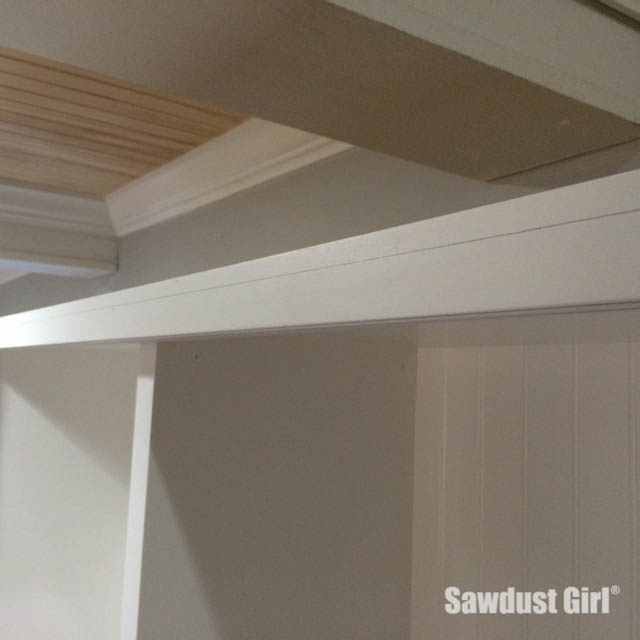
Fill Gaps
If the face-frame extends past the side of the cabinet (as most do), fill the gap with a piece of scrap wood (that is the same thickness as the gap). You can install the scrap so it’s bottom edge is lined up with either: the faceframe – or
The side of the cabinet must be flush with the side of the faceframe for the crown moulding corner to be square.
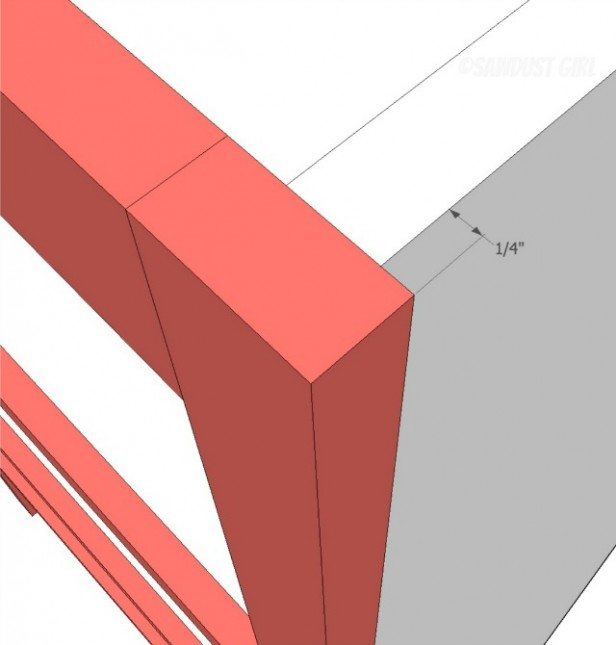
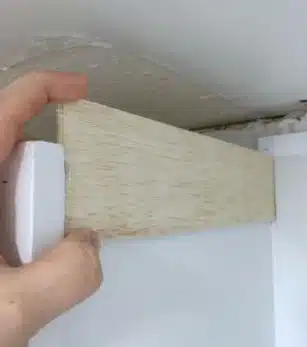
Use whatever scrap you have handy. I used a paint stir stick on my China hutch. The filler strip should not extend below the bottom line mark.
Add nailer block
If there is not a large area of cabinet sides and face-frame (above your crown bottom line) it will be difficult to attach the crown moulding with nails because you angle the nails up, often missing the cabinet/faceframe all together. If you secure a block of wood around the perimeter at the top of the cabinet it will give you a surface into which you can shoot the nails and secure the crown moulding.
Measure and Cut
Measure and cut ALL pieces of crown before nailing any to the cabinet. I find that holding the piece of crown moulding up to the cabinet and marking where it needs to be cut is far more effective than trying to measure the cabinet with a measuring tape and transferring that measurement to the crown moulding.
To do this, cut pieces of crown moulding that are generously longer than each piece needs to be – giving you enough to work with but allowing you to work with manageably sized pieces.
- Start with a side piece. Hold the straight end against the wall and mark where the crown molding exits the cabinet.
- Measure and mark the opposite side piece in the same way.
- Cut both pieces.
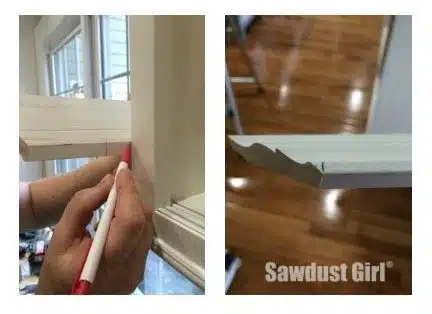
Make yourself a set of templates from my cutting guide for easy reference how to cut each side or each
- For the center piece, cut the right end and then hold it in place with a piece of painters tape while you mark the other end to ensure you get an exact measurement.
Dry fit
Once all pieces are cut, use painters tape to hold your pieces in place while you make sure they are all the right length and the corners close up tight. Crown has an irritating way of lining up perfectly and then suddenly NOT being the right size AFTER you’ve driven a few nails into it. I like to give it a little test drive before I make the nail hole commitment.
Glue and Nail
Once you’re happy with the dry fit, apply CA or wood glue to the corners and start nailing the crown onto the cabinet.
- Start on one side of the cabinet and work your way around.
Now fill nail holes, caulk and paint. The caulk is especially important if you had a gap on the sides that you filled in with a spacer (like my paint stick). After
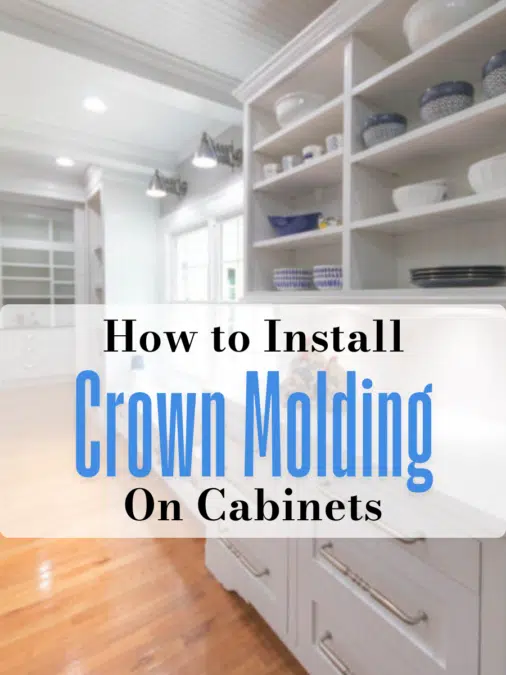
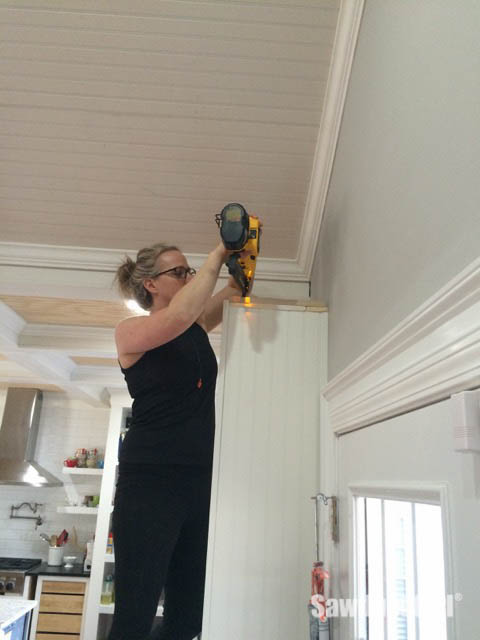
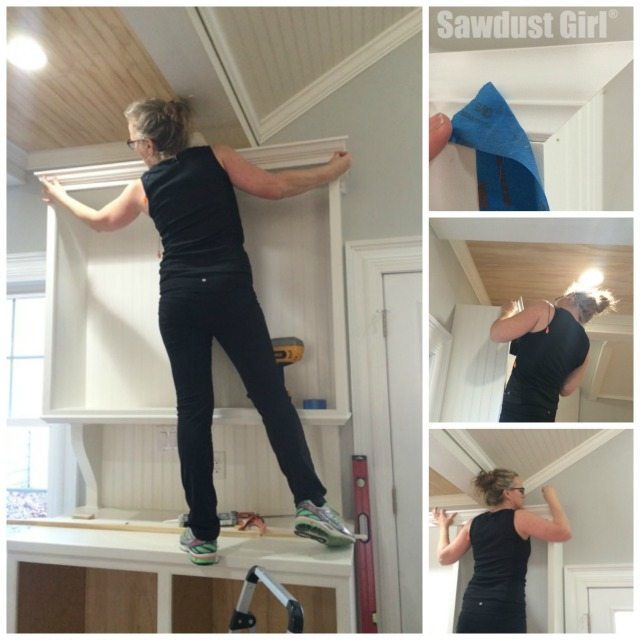


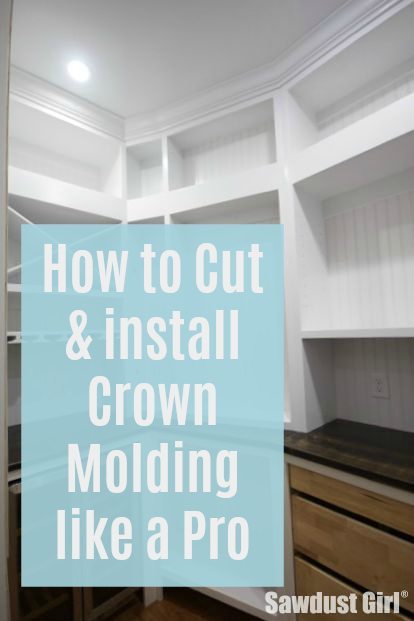
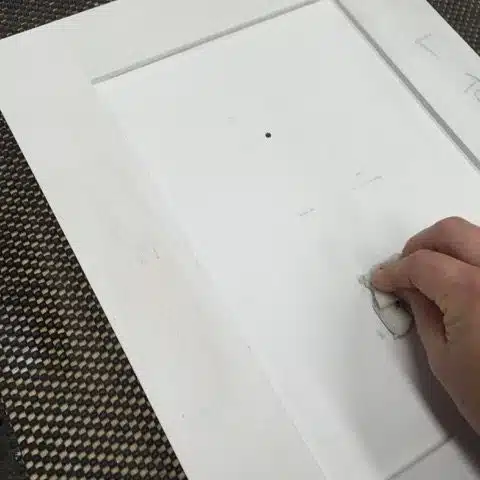
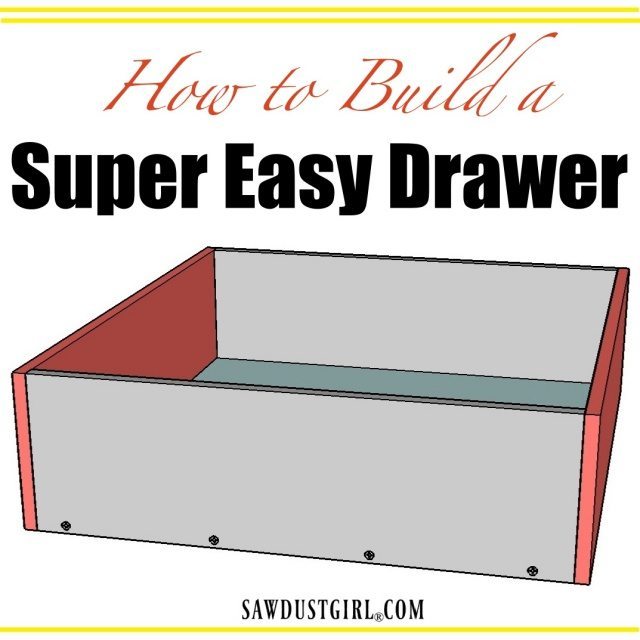
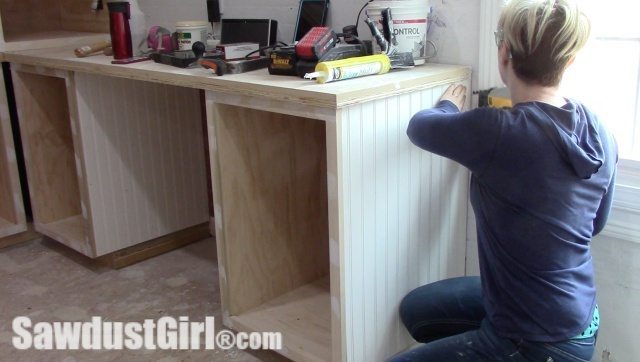
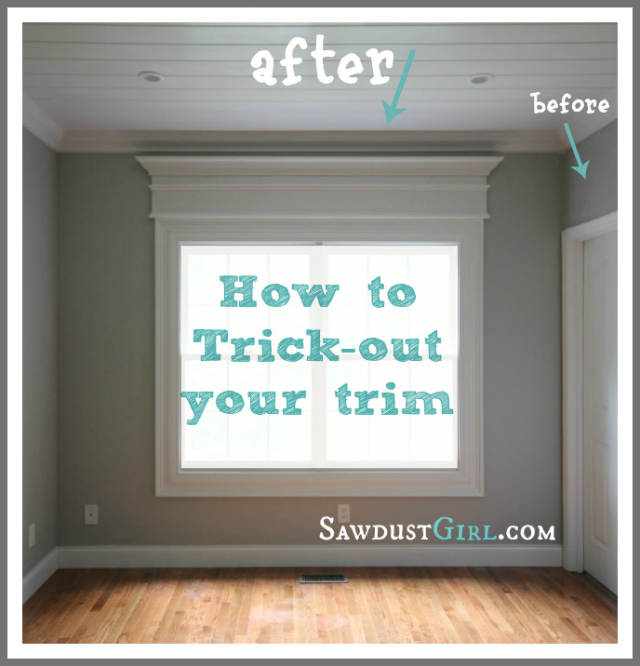
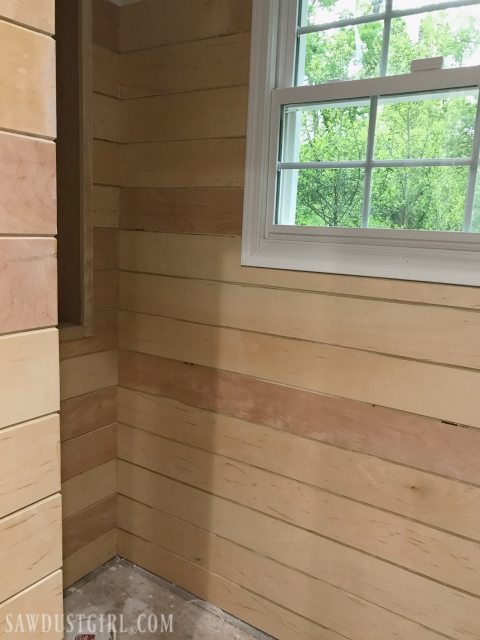
I love the look of stacked mouldings. You could do that or just add a filler strip above the cabinets and then do the crown. This is easy to do if your cabinets are painted and you can paint the filler strip to match. Harder to do if you have wood/stained cabinets.
Hi!
We are redoing our kitchen and have a 6″ gap above our wall cabinets. We want to install crown molding but can’t find one that fits the entire space. Any suggestions on how to go about this?